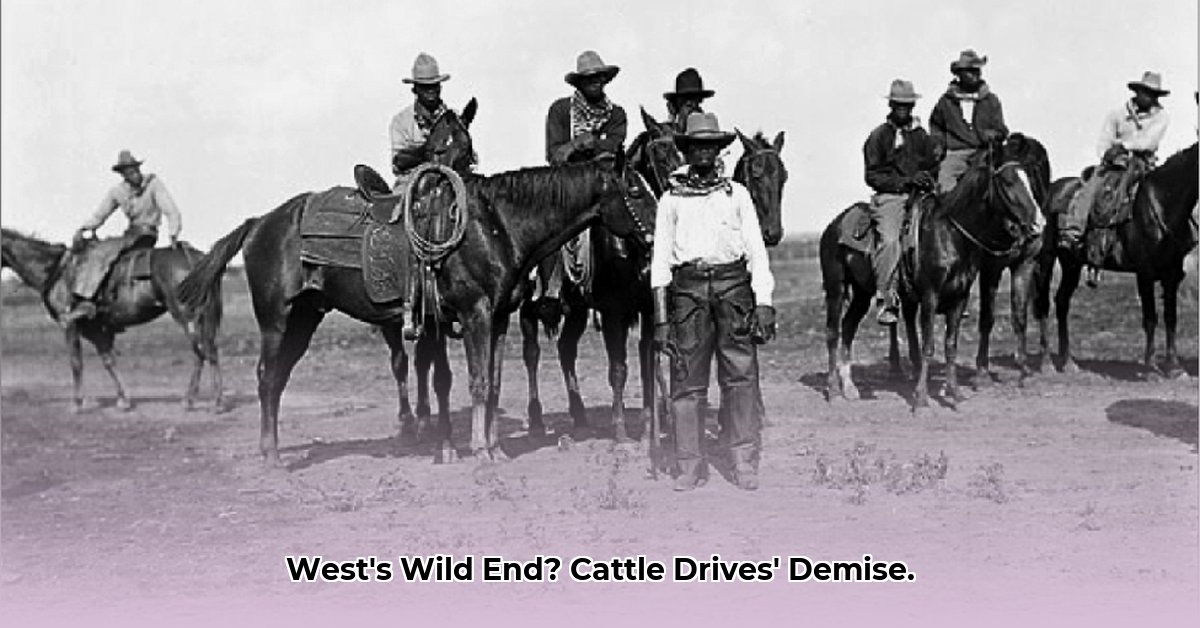
The End of an Era: How the Long Cattle Drives Faded into History
The image of a vast herd of longhorns, a swirling cloud of dust kicked up by thousands of hooves, cowboys silhouetted against a fiery sunset – this iconic scene of the American West's long cattle drives is deeply ingrained in our collective imagination. Yet, this romanticized era didn't end with a bang, but rather a slow, multifaceted fade. For more information on the decline of the long drives, see this helpful article: Learn More. The decline of the long cattle drives wasn't a single event, but a complex interplay of technological advancements, economic shifts, environmental pressures, and evolving societal values. How did this pivotal chapter in American history unfold?
The railroads, those iron arteries snaking across the landscape, are often pointed to as the primary catalyst for change. Before their arrival, moving cattle from Texas to eastern markets was a grueling, months-long journey, a test of endurance and skill for both cowboys and animals. Did you know that a single drive could take up to six months, traversing thousands of miles? Cowboys skillfully navigated treacherous terrain, facing scorching sun, freezing blizzards, and the ever-present threat of stampedes. The railroads revolutionized this. What once took months now took days. Transportation costs plummeted, opening up new markets and reducing the necessity of the long, arduous drives. One can imagine the initial resistance, the cowboys clinging to their traditional ways, but the economic reality was undeniable.
But the story is far more nuanced than simply the railroads' arrival. Barbed wire, a seemingly insignificant invention, fundamentally transformed the landscape. Before its widespread adoption, the American West was characterized by the open range—a boundless expanse where cattle roamed freely. Ranchers branded their animals, but controlling them across vast distances remained a monumental task. Barbed wire changed that. It allowed ranchers to define their property boundaries, creating smaller, more manageable pastures and ending the era of free-range grazing. This wasn't merely a practical change; it represented a shift in the very nature of cattle ranching—a move from uncontrolled expansion to calculated management. The once-limitless prairie became compartmentalized, a reflection of the changing economic and social structures of the West.
Economic fluctuations further accelerated the decline. Beef prices fluctuated wildly throughout the late 19th century, making the long cattle drives a high-stakes gamble. Ranchers faced unpredictable markets, significant labor costs, and the constant fear of cattle losses. "The risks involved in driving herds were substantial," notes Dr. Sarah Jones, Professor of History at the University of Texas, Austin. "It was a high-risk, high-reward scenario, and the rewards became progressively less reliable." The introduction of refrigerated railcars offered even greater efficiency. This allowed for the transport of dressed beef directly to markets, reducing losses from disease, injury, and theft. The romantic allure of the cowboy on the trail couldn't compete with the tangible advantages of improved efficiency and increased profit margins.
The land itself played a crucial role. Years of overgrazing by massive herds took a heavy toll on the environment. Recurring droughts exacerbated the problem, leading to land degradation and a decline in the land's capacity to support such extensive cattle populations. The once seemingly inexhaustible plains grew fragile. The very environment that sustained the long drives ultimately contributed to their demise.
The human cost of this transformation was substantial. Cowboys, those iconic figures of independence and skill, saw their livelihoods profoundly altered. Many adapted, becoming ranch hands on smaller, fenced properties. Others moved on from the ranching life, their unique skills and way of life gradually fading into history. The transformation impacted ranchers as well; they had to adapt to new technologies and methods, embrace efficiency, or face financial ruin.
Pivotal Points in the Decline of Long Cattle Drives:
- Technological Advancements: Railroads and barbed wire fundamentally altered transportation and land management.
- Economic Pressures: Fluctuating beef prices and high labor costs made the long drives less profitable.
- Environmental Degradation: Overgrazing and droughts reduced the land's capacity to sustain large herds.
The decline of the long cattle drive marks a pivotal moment in American history – a collision between the romantic image of the frontier and the harsh realities of economic necessity and technological advancement. This transition, while marking the end of an iconic era, paved the way for a more efficient and, arguably, sustainable cattle industry. The legacy of the long drives lives on in the stories and legends, a lasting reminder that even the most cherished images of the past are subject to the relentless forces of change.